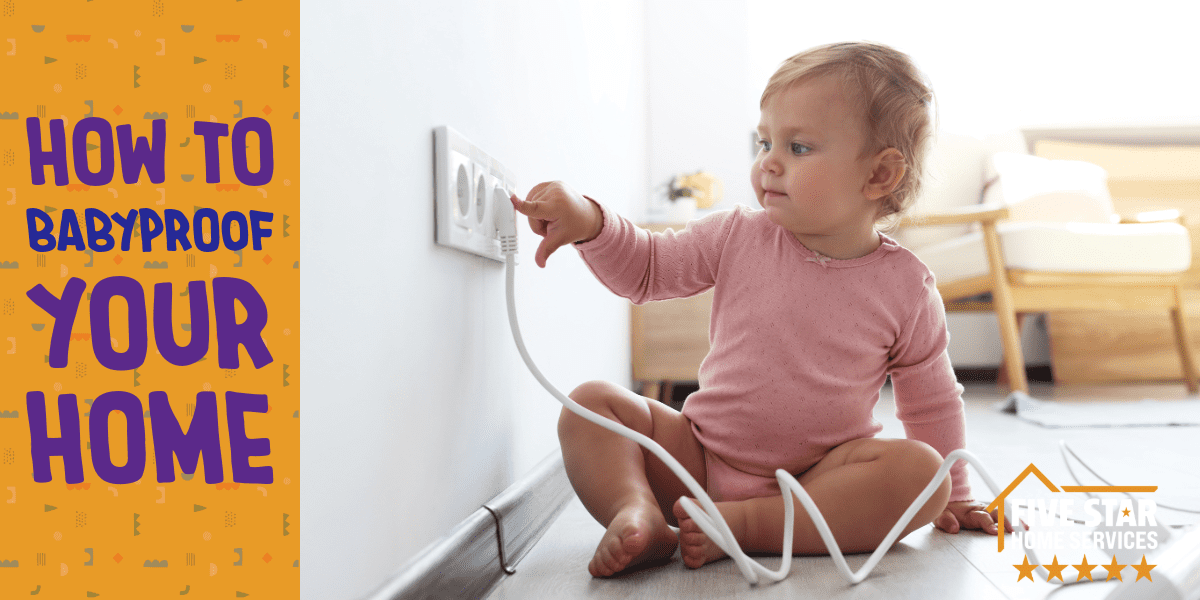Our little ones learn through exploration.
Because there are dangers throughout the home, our job is to keep our youngsters safe until they can understand the safety hazards of the modern world. Infants’ early years of mobility are one of the most dangerous development times. Although Pre-K children may begin to grasp the concept of danger and electricity, it is different for children between the ages of two and five.
For these little ones, babyproofing is essential.
One of the most loving things you can do is be proactive and baby-proof your home to protect your little one from trips, falls, and electric shocks.
Everything looks like an electrical hazard once you have a baby in the home!
How to Baby-Proof Your Home
Using Outlet Plates
Although the sliding plate covers are a more expensive, they don’t require removing an outlet cap every time you want to use a plug. Using them is a simple DIY job that offers a much safer and more secure option. The plate automatically snaps back into place after you unplug your device, keeping everything very user-friendly. Learn more about child-proof outlets.
Install Electrical Outlet Caps on Empty Outlets
Use Electrical Outlet Covers for Exposed Cords
Because babies also love outlets that have cords plugged into them, babyproofing them is essential as well. In-use outlets and power cords are a bit more complicated. Nevertheless, there are some good options. One easy way is to block the outlet whenever possible by using a piece of furniture. If that doesn’t work, there are child-proof covers that make it virtually impossible for a baby to pull the cord out and stick something in the outlet.
Use Cord Covers for the Floor
Try a filmmaking trick for exposed cords and cables running across the floor: Use gaffer’s tape to secure them to the floor, the wall, or the baseboard. As for power strips, try to avoid using extension cords, especially when there’s a baby in the house.
Using Childproof Power Strips
Power strips aren’t always a long-term solution. We always recommend using as few power strips as possible because having one of our electricians install additional outlets is a far better option. Nevertheless, if you do, power strip covers are available that go over the top of the strip. Although the cords are still exposed — the outlets are blocked.
Using Cord Shorteners for Longer Cords
We recommend wrapping longer cords and cables into a loop and securing them with a zip tie or high-quality tape. Additionally, plenty of fairly inexpensive products do the same thing but look a lot nicer and are far more professional.
Plan to Travel?
Another important tip we should mention: If you are traveling and want to protect your baby from electrical risks in additional places you might be staying, we recommend carrying a few outlet covers and a roll of tape with you so you can quickly secure outlets and tape down cords on the road.
Wanna Learn More? Give us a Call!
There you have it — the basics, at least!
These are the fundamental steps for baby-proofing your home. They include securing empty outlets, covering occupied outlets, securing power strips, and eliminating exposed cord risks. To learn more about baby-proofing your home or to schedule an electrical safety inspection, talk to one of our state-licensed electricians today by contacting Five Star Home Services online, view our electrical services online, or call us at (833) 405-8009.


